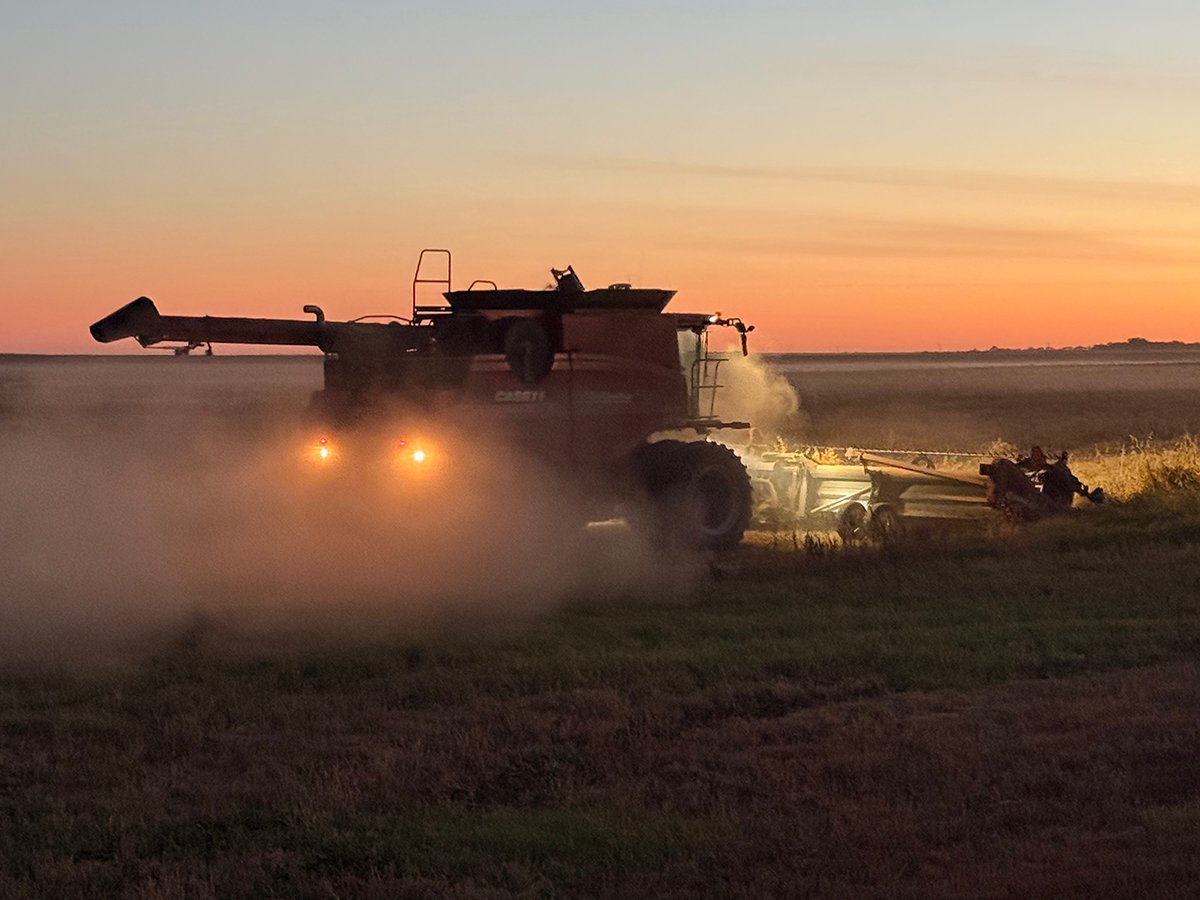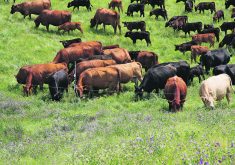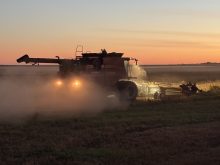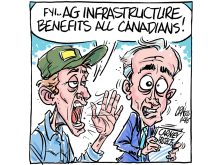WHO’S MAKING MONEY?
During the 50-year anniversary celebration of the Mosaic potash mining operation, someone asked why there is such a boom in the potash industry today.
In his answer, a spokesman for the Mosaic company pointed out that in 1962 the price of a bushel of wheat was less than $2, whereas today a bushel of wheat is $7. That is true.
That doesn’t mean the farmer is making more money.
The fact is that in 1962, that $2 bushel of wheat would buy 20 loaves of bread, and a bushel of wheat will produce enough flour to make about 60 loaves of bread. A bushel of wheat would buy eight to 10 gallons of fuel (gas or diesel)…. In 1962 it would probably have taken about 20 bu. of wheat to purchase a tonne of fertilizer.
Read Also

Downturn in grain farm economics threatens to be long term
We might look back at this fall as the turning point in grain farm economics — the point where making money became really difficult.
Today, at $7 a bu., one bu. would buy two to three loaves of bread … and it would take 80 to 100 bu. of wheat to buy a tonne of potash fertilizer.
Now that is not the same story for people who have off-farm jobs in industry or commerce.
Fifty years ago, a year’s wages would buy a pretty nice new car. I know. I worked at the mine in the initial days of construction, and I bought a new 1958 Chev car and it cost a year’s wages.
And the same is true today. A person working off the farm can buy a very nice car with a year’s wages. In the mining industry it won’t even take a year’s wages.
So with regard to the success of farming, it certainly is not high grain prices driving the demand for potash. A lot of farmers have had, or still have, off-farm jobs to make their farms successful. And just like business or industry, you have to grow bigger to survive. Where farmers used to farm hundreds of acres of land, they now farm thousands of acres.
So all said and done, when a farmer only gets 12 cents (four percent) out of a $3 loaf of bread, who is making all the money?
Ken Leftwich,
Esterhazy, Sask.
USE OF ANTIMICROBIALS
Re: OMA wants ban on antibiotics in livestock feed.
Use of antimicrobials in human and animal medicine contributes to resistance and our potential to treat individuals.
The science and public health communities working in this area agree that use and misuse of antimicrobials in human medicine is the biggest contributor to resistance. Agriculture is doing its part.
The animal pharmaceutical industry is working with Health Canada to phase out product growth promotion claims for critically important drugs needed in human medicine.
Health Canada plans to modernize regulations to close loopholes that enable importation and use of non-approved antimicrobials in animals.
Meanwhile, veterinarians and producers have implemented drug use protocols that target management of drugs to prevent harmful residues entering the food chain and to minimize the occurrence of resistance.
Both human and animal medicine professionals and users want to ensure the long-term effectiveness of antimicrobials so that humans and animals can be successfully treated for the illnesses they experience.
Jean Szkotnicki, president,
Canadian Animal Health Institute,
Guelph, Ont.
NO COMPARISON
Your recent article about Eugene Whelan (Feb. 28 WP) spoke of his role as agriculture minister. It was stated that Mr. Whelan’s priority was always the welfare of the farmer. He is credited with working to keep agriculture financially secure. This included the development of Canada’s supply management sectors.
What upset me about the article was the audacity of (current agriculture minister) Gerry Ritz in comparing himself as being equally concerned for the welfare of farmers.
It is my opinion that all Mr. Ritz has accomplished in his tenure as agriculture minister is to undermine, eradicate and dismantle.
The wheat board had to go. Despite his inability to obtain a majority vote from farmers that this was their choice, it was dismantled.
His gutting of AgriStability, selling off community pastures, cutting AgriInvest and the tenuous continuity of the supply management sector doesn’t sound all that farmer friendly to me.
All of this he did at a time when healthy farm prices lulled farmers into acceptance. Just try to stop him. He’s a man with a mission and his government has a majority. Opposition is simply ignored.
He constantly warns there will be no ad hoc programs in the future to rescue farmers from the ravages of flood, drought or fuelling world markets. His best advice? “You’d better have good insurance.” Wasn’t that the policy of the 1930s?
Mr. Ritz, if you wish to compare yourself favourably to Eugene Whelan, you need to build, not destroy.
M. G. March,
Goodsoil, Sask.
BRANDED BEEF
Ever wonder how it is possible that Canada is the top export market for U.S. beef and the U.S. is also the top export market for Canadian beef? Makes no sense, right? Wait, it gets better than that.
Canadian beef is exported to the U.S. at a discount because of country-of-origin labelling. The very same beef can then be exported back into Canada and sold at a premium. We actually sell our beef to the U.S., they then sell it back to us and we pay more for it than the beef in Canada.
How is this possible? Branded beef programs.
Many years ago, some folks in the U.S. decided it would be a good idea to create a brand to sell more beef.
They hired an advertising firm and started something new, a branded product. The most successful one was the certified Angus brand….
The trend also caught on in Canada. Actually, it spread like wildfire, successful beyond anyone’s imagination.
They started charging a hefty premium for the product. The people who started the Angus program in the U.S. saw that the Canadian Angus people were making money. Next they put a stop to Canadians selling Canadian Angus in Canada. They claimed to own the trademark. Now all certified Angus is imported from the U.S.
Today there are dozens of beef brands out there all claiming to have a superior product and charging a hefty premium….
The bottom line is that all these branded beef programs have trashed everybody else in order to promote their brand. Canadian packers have lost markets, beef consumption is dropping and consumers are paying more. This has hurt everyone in the beef industry….
Smart consumers will ignore all the hype around brands and select their meat based on grade, cut of meat and price.
Federal inspectors examine every carcass to determine the age of the animal and the degree of finish, the marbling and many other factors. This is a much better way of quality assurance than a brand name.
If you think my opinions are biased, I should mention that I run a herd of 150 Black Angus cattle that are implant free — don’t think the extra trouble is worth it — and sell them at the local auction.
Frank Schlichting,
Cecil Lake, B.C.
SUPERIOR WHEAT
Re: New spring wheat presents market opportunities, by Brian Cross (WP March 7).
Liberated from kernel visual distinguishability restrictions on Canadian Western Red Spring varieties, four decades ago Laurie Evans at the University of Manitoba initiated a high protein first wheat selection strategy, later definitively elucidated and subsequently published in a major peer-reviewed journal (McKendry and others).
Since useful high protein requires high productivity, progress was quick, easy and cheap, resulting in lines like UM684 of Glenlea — subtropical parentage and KVD consistent with mainstream Canada Prairie Spring Red.
Having medium-strong dough, such lines exceeded then-leading CWRS varieties in combining both higher yield plus higher protein, thus representing a truly superior product.
Didz Zuzens,
Winnipeg, Man.
















